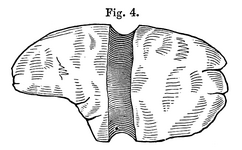Hey, I was just wondering if anyone could help me identify if this is a First Nations artifact or a rock with a vein of softer rock which wore away. From my amateur anylsis I would assume is has been carved. There seems to be tool marks in the the main large groove. There are also multiple other straight lines that are faint, which don't seem to have any other mineral in them.
Thank you in advance for any help. If more pictures are need I can easily snap some.




Thank you in advance for any help. If more pictures are need I can easily snap some.




Amazon Forum Fav 👍
Upvote
0











